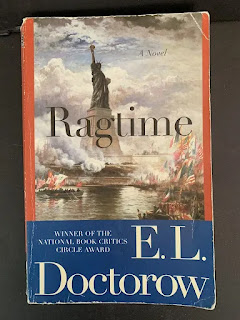The following is part of the Secret Places and Trippy Houses blogathon hosted by Taking Up Room
“I shot a man in Reno just to watch him die.” Johnny Cash, Folsom Prison Blues
“They
brought their cult to California because everybody does.” Dashiell Hammett, The
Dain Curse
One night in
1969, four strangers – kindly Father Flynn (Jeff Bridges), redneck salesman
Laramie (Jon Hamm), lounge singer Darlene (Cynthia Erivo) and hippie chick with
attitude Emily (Dakota Johnson) – check into the El Royale, a fading Atomic Age
lodge built right on the border of California and Nevada – a painted red stripe
of demarcation runs down the middle of the lobby.
Including Miles
(Lewis Pullman), the hotel’s only employee, none are exactly what they initially
seem.
The same can
be said for the curiously vacant Royale. Unbeknownst to its guests there is a hidden
corridor running behind the rooms, each with a two-way mirror allowing for unseen
surveillance or discreet filming.
When
Laramie, in truth an FBI agent on special assignment, discovers wire taps and
the two-way mirror in his room, he locates the secret passageway. Looking
through the mirrors undetected by the room’s inhabitant is like viewing diorama
exhibits in a living museum as the guests reveal their secrets in the “privacy”
of their rooms: Flynn taking apart his room, floorboard by floorboard, while Emily
has a bound and gagged girl in her room.
 |
| Jon Hamm on a dark and stormy night |
Later, Miles reveals that under orders from “management” he sometimes secretly filmed visiting VIPs. (Flynn looks through one reel revealing a well-known politician in flagrante delicto, a sociopolitical conspiracy red herring that goes nowhere. Director/screenwriter Drew Goddard crams a few other circa-1969 historical events into the script; only one, Miles' Vietnam service, has any bearing on the plot).
Historical aside: While the Hotel Royale is fictional, the Cal-Neva Lodge was a resort and casino straddling the border between Nevada and California on the shores of Lake Tahoe. In 1960, Frank Sinatra purchased the resort with several others, including Chicago mobster Sam Giancana. Allegedly, John and Robert Kennedy used the lodge to carry on extra-marital affairs.
When Emily blasts
one of the guests with a shotgun, it sets off a series of events – including
the appearance of Billy Lee (Chris Hemsworth), a psychotic cross between Charles Manson
and Jim Morrison – that bring on the “bad times.”
 |
| Hemsworth reviews the mystery film |
Goddard knows his way around secret places and trippy houses. In his The Cabin in the Woods (2011), there’s a two-way mirror and secret entrances leading to underground passageways, all central to the plot, gateways to understanding why and how things are happening. In Royale, the secret corridor is an ingenious device that provides glimpses into the characters’ behaviors and intentions, leading us to continually readjust our perceptions: “He’s good, no he’s bad, wait he’s definitely good.”
Like The
Cabin in the Woods, which turns teen slasher movies upside down and inside out,
Bad Times at the El Royale is another genre-bender, Agatha Christie’s Ten
Little Indians on acid, as a group of strangers assemble in a vacant hotel
on a dark and stormy night and the bodies start dropping.
The film’s
MVPs are Bridges, Erivo and Pullman. Flynn and Miles are well-realized
characters with backstories, although Darlene is a bit one-dimensional; taken together, however, they forge a bond and
the emotional core of the movie. Hemsworth’s Billy Lee is scarily evil.
 |
| MVPs Bridges and Erivo |
Considered a box office flop when it was released, Bad Times at the El Royale is a clever, suspenseful movie that manages to keep its bursting-at-the seams plot and characterization together. It's worthy of a second, or if you’ve yet to check it out, an initial look.
And be careful standing in front of hotel mirrors. You never know who might be behind them.



























